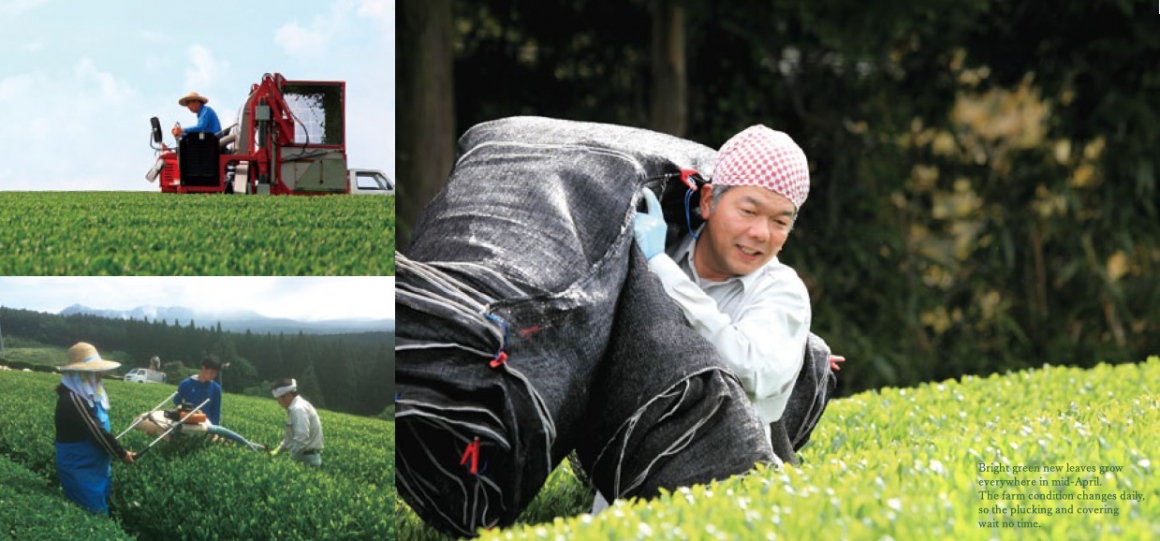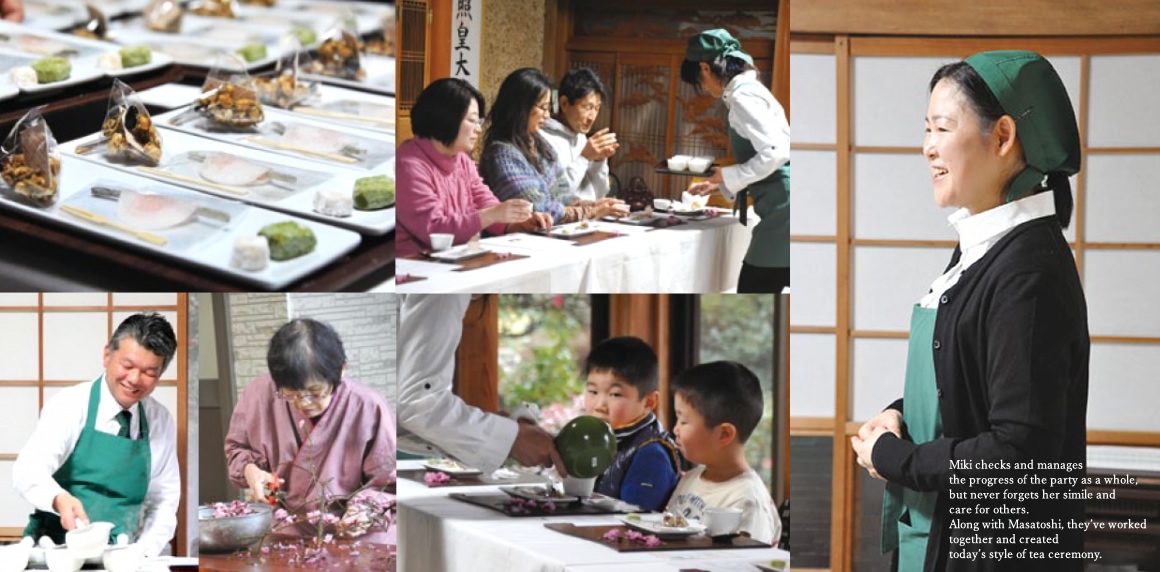A cup of tea that will fulfil your hearts
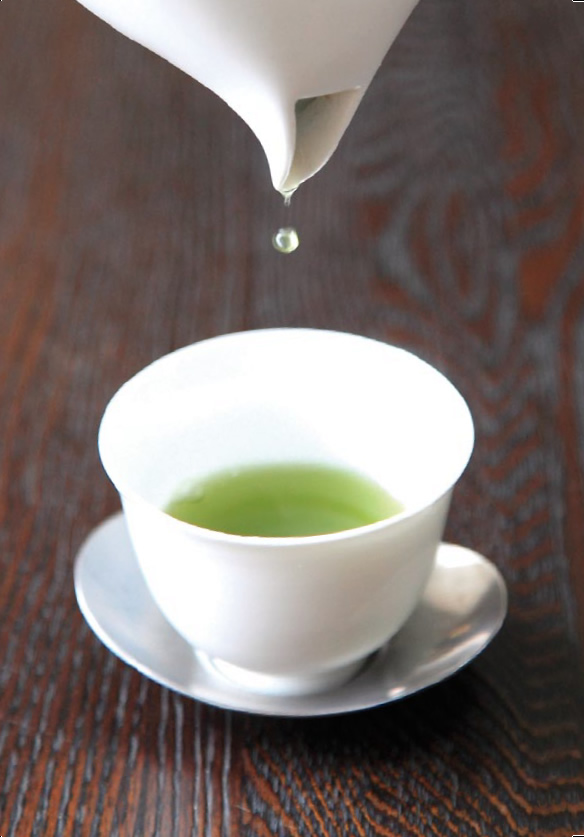
In the central part of the mountainous region of Higashisonogi County facing shiny Omura Bay of Nagasaki Prefecture, there is a distinct tea garden with a history that runs half a century. Its name ChaYou on the sign with the Japanese characters茶 (tea) and 友 (friend) stands for the ambition to make tea which is always beside customers and binds customers to them. The whole processes from cultivation to tea production and sales are handled by ChaYou itself. Anyway, you should once taste its tea.
The steam from a cup will let you enjoy the lovely roasty aroma of tea leaves. Only a sip is enough to take you away to a greater aromatic experience of this tea. You’ll be surprised to find its rich Umami taste blended with its sweetness. Then the pleasantly bitter taste finalizes the aftertaste of each sip you make. You will realize that tea is not just a drink but something that fills your heart with its taste and with love of the producer.
This amazing experience attracted many people who belong to its longtime patronage today. The fact that ChaYou won its customers solely through word-of-mouth speaks for itself.
The high quality of ChaYou leaves have won several national awards since 2008, including the Emperor’s Cup in 2010, Minister of Agriculture and Fisheries Award for four times and Japanese Tea Award in 2014.
Masatoshi Matsuo, the Master of ChaYou however, is never too eager. “Sure, winning those awards do become our achievement, but you know the moment you win, that is a past thing. For us, it is our best to keep producing the tea which our customers satisfy.
Distinct way of tea making in Nagasaki
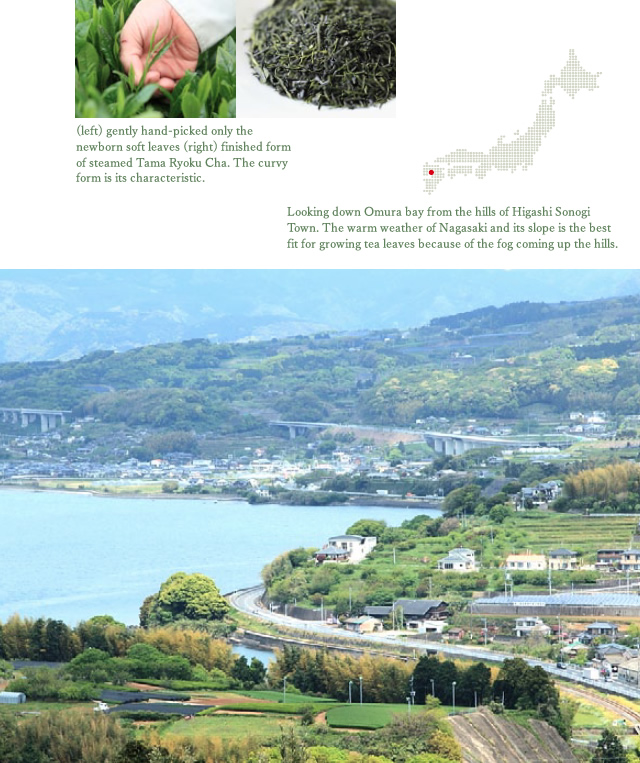 You may be surprised to find that this attention-winning tea is not produced in famous regions for tea production like Shizuoka or Uji. There are about 300 tea farmers in Higashisonogi area, where ChaYou is located. The local brand called “Sonogi-cha” is mainly consumed around Nagasaki and the brand name is not so well known in other area.
You may be surprised to find that this attention-winning tea is not produced in famous regions for tea production like Shizuoka or Uji. There are about 300 tea farmers in Higashisonogi area, where ChaYou is located. The local brand called “Sonogi-cha” is mainly consumed around Nagasaki and the brand name is not so well known in other area.
But historically, Hirado city in Nagasaki is the classic ground for Zen Master Yousai to first seed tea from China in 1191. Nagasaki is known for its high consumption of quality tea. This probably is because people here can feel the history of tea and are proud of it. There always is a ground for enjoying the quality tea.
The western Kyushu area, where Nagasaki Prefecture lies, adopts the Chinese method of “Kamairicha” or roasting leaves in a cast-iron cooking pot. For the most part, the tea leaves today are no longer produced in this way but are first steamed and then rolled and dried, known as “Sencha”. But unlike any other Sencha leaves which look like needle, their leaves have distinct curly shape which is similar with Kamairicha. This green tea, commonly referred to as “steamed Tamaryokucha”, accounts for just three percent of nationwide tea production.
In case of steamed Tamaryokucha, the original appearance of tea leaves remains clear as they are not specially shaped during processing. “You cannot trick anyone since we don’t form the leaves to look better than they actually are,” says Masatoshi.
Tea that body wants
ChaYou’s tea fields are mainly on the 300-meter hill, looking down Omura Bay in the distance. In 1970, Sachio, the father of Masatoshi, started the tea farm here, in which his whole family was involved. In 2004 Masatoshi officially took over the operation. Today, Mr. Kiyotaka Nishikawa in the same county, an alumni of Masatoshi at the National Institute of Tea Science, joins the management of ChaYou. Their wives Mika Matsuo and Mitsuru Nishikawa help sales and office work. Also both Masatoshi and Kiyotaka’s parents go out in the field. They are still as tough active as their sons. Hence, ChaYou is a big family of two families plus 8 staff.
The essential basis of tea making for ChaYou is to produce powerful sprout. By limiting the number of new leaves sprouting out from the bush, each new leaves have more density. The key also lies on soil cultivation, especially the quality of fertilizers. “As a basis for our fertilizer, we procure high quality organic materials, such as rapeseed meal, fish powder of bonito and mackerel,” says Masatoshi, “these are as good as the ones used for livestock meals. We don’t want to use chemical fertilizer as much as possible. Tea that has been grown with organic fertilizers fits our body and is ideal for daily enjoyment. This is exactly the kind of tea we will produce.”
They do not use blended fertilizer in the market. They order sample fertilizers, check the components, use their hands and nose to ascertain the quality. Then they order certain kinds they use for the season. What is more, they change the blended fertilizers by each farm. This is because each location of their farm (total area of 8.5 hectors) has different weather conditions and the way the tea plants grow differs. “Tea leaves grown with organic fertilizer often taste a bit unripe right after production,” Kiyotaka explains, “But as you let it sit, a taste will come out. It is best in autumn when it is released from the stock house.”
Keeping tradition of Warakake
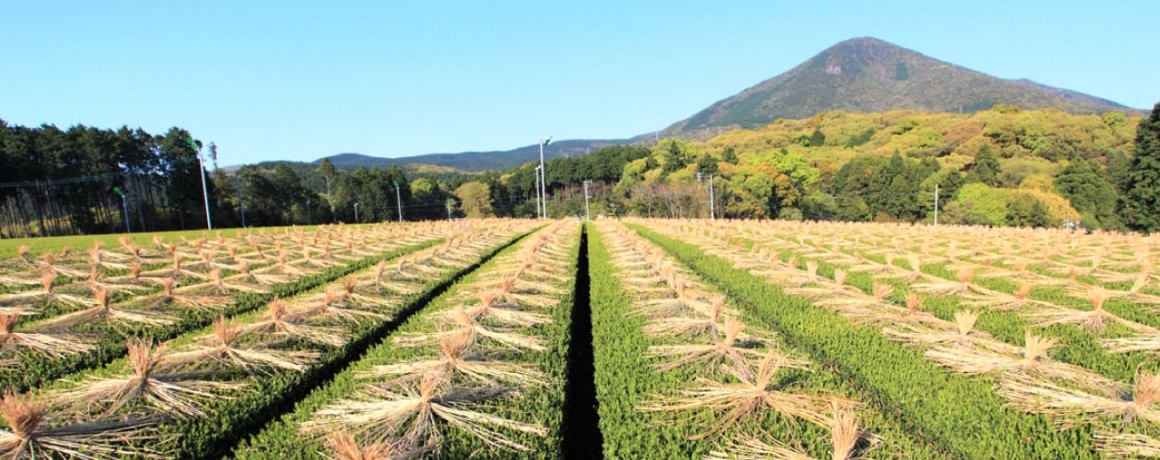
ChaYou also strives to preserve the tradition of this region, while most producers modernize the tea farming. The most symbolic of such tradition is the “Warakake”-shading, which takes place every spring. Using the rice straw and making the shape of an umbrella by tying the bundle and spreading, it is used for reducing the sunlight, so that the leaves grow with stronger Umami component. Shading is a popular method used especially for Gyokuro, one of the highest quality tea. Most farmers nowadays use net made of synthetic fibre. Shading using the straw is so much burdensome, so even the neighbour farmer rarely use the method anymore.
To cover about 200 square meters, then a truckload of straw is needed. After binding the straw, they need to comb out to get rid of short or broken straw. If they are mixed and used for shading, it could cause damages to the quality of leaves. Of course, all the work is done by hands. Afterword, the used straw is used as a fertilizer mixed in the field. “I guess that this traditional method came from forerunners’ experiences. In fact, not only the Umami increases, beautiful aroma with light note of straw is created,” said Masatoshi.
Master the taste with technique and sensitivity
 Every tea farmer sees its peak season of making Ichibancha or the first pluck in late April to May. ChaYou is no exception and Masatoshi and Kiyotaka are super busy in plucking and processing in the factory. The plucked leaves are processed to Aracha (dried leaves before completion) on the day and be vacuumed and be refrigerated.
Every tea farmer sees its peak season of making Ichibancha or the first pluck in late April to May. ChaYou is no exception and Masatoshi and Kiyotaka are super busy in plucking and processing in the factory. The plucked leaves are processed to Aracha (dried leaves before completion) on the day and be vacuumed and be refrigerated.
What makes a big difference in the taste of leaves is the “steaming” process. By well steaming the thick and bulkier leaves, and crumple them afterwards by hands, the natural flavour and taste of leaves are multiplied. However, too much of these will lose the flagrance and sapor. “Steaming is the key to the quality of Tamaryokucha If this is done right,” says Kiyotaka, “there you get the right tea.”
Also in the further processing process, everything is coordinated under the strictest control of Masatoshi and the use of various technical finesse. An example is a machine developed in collaboration between ChaYou and a manufacturer of production machines. While in conventional machines only hot air is blown into a rotating drum in the last phase of rolling, the newly developed machine allows the use of fire, which significantly intensifies the aroma of the tea.
About five hours is needed to make Aracha or rough tea since after steaming. “It depends on the kinds of leaves but when new leaves become Aracha, the weight is reduced to 1/5 to 1/7,” says Kiyotaka. “In the process of crumpling, a lot of tea stain are caught in the machine. Just by looking at it, I can tell the outcome of how well the tea is made. When the colour of the incrustation is beautiful, the colour of tea is beautiful, too. When it is soft, it’s a good sign of good tea.”
They also have a strong preference in roasting. “Since this area is originally well known for its pot roasting tea production, local people prefer to drink roasty green tea. So we tend to roast our tea leaves strong. It is our major premise to grow strong tea leaves not to lose its flavour,” says Masatoshi.
After being roasted depending on the field and the breed, the leaves are finally examined and the taste will be finalized. For example, the breed “Asatsuyu” has, similar to Gyokuro, a strong Umami and light sweetness, but at the same time fragrance reminiscent of sweet potatoes or chestnut. By adding a bit of leaves of another breed it will balance out and results smoother taste.
The award-winning Asatsuyu of ChaYou became famous and now it is ChaYou’s attraction. “Every year until Astatsuyu is completed, I feel pain in my stomach,” laughs and Masatoshi continues, “When it is done, I am relieved.”
Tea bonds people’s heart
There is an important event ChaYou holds for over 10 years. They invite local customers to a tea ceremony four-times yearly. It is meant to have an opportunity to have a good communication between the producer and the consumers. At the party, their new products are also introduced and inform customers ChaYou’s aspiration and their new projects.
Newly-picked tea in Spring, Star festival in summer, Harvest Thanksgiving in autumn and Spring Festival on early February; the customers enjoy ChaYou’s tea and handmade Wagashi or Japanese sweets for the season, and also the landscape of magnificent small Japanese garden from the living room of the family.
The participants of the party began with about 20 people, but after 10 years, each time over 200 people come to ChaYou’s party. Today, they need to adopt reservation basis. Mika is responsible for managing the party, receiving reservations, give thoughts and design Japanese sweets and cooking. On the day of the party, all the staff and the family members team up for sales and hosting guest.
The reason behind the expansion of the participants has much to do with word-of-mouth. “I love green tea and I can hear a lot of precious talks, so I come here every time with joy.” “My grandson said ‘it’s delicious’ and since then I come here every time. Through this tea party, I hope he will be familiar with Japanese culture.”
Everyone present is eager to come to this party. Masatoshi is convinced of the positive effect of the event. “The very first meet had only 20 people. But they were really happy and I could communicate with them well. That is the motive force to drive to continue the tea party up to now. I feel more expectation from the customer than before.”
Mika also looks happy for her efforts are rewarded. “There were times when more people than expected came. So I might have caused them troubles to correspond. Making a menu for Japanese sweets, and actually preparing them in bulk is hard work but I believe they are all worth it.”
After the party, ChaYou sends out thank you cards to each single guests. Sometimes they receive their thank you cards in return. This special relationship between the tea maker and its consumer is made possible by meeting face to face, make tea and enjoy it together.
Cultivate the future of tea
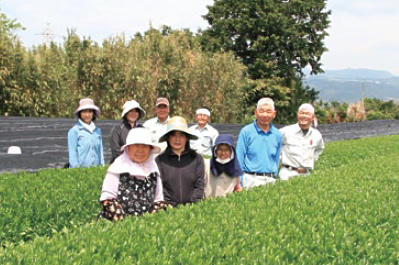
In this world of ever-changing society, ChaYou has also begun its new challenge for the future.
After coming under the spotlight of the tea industry, many requests for collaboration are coming from the municipality and machinery makers as well. So ChaYou is not sticking with its present way of making tea but even challenging to produce various tea like Matcha, Oolong tea and black tea. By challenging those, they believe they can accumulate further experiences for technical advancement. They are also active to visit abroad such as China and Germany to create new market there.
Unlike before, when they only focused on making tea, today sometimes they have to drastically alter their way, or sometimes they feel perplexed. They also have a pressure to complete what they’ve wrestled with. That is when Masatoshi think of his forerunners who had worked on the same field long ago.
“What did our forerunner have in their mind in making their tea? They must have simply concentrated their power on what is within their means, without being obsessed with ambition. The accumulation of such efforts has built today’s high quality of Japanese Tea. How I wish I could follow their footsteps.”
So at their first tea party in 2017, the theme of the discourse was set to “Thanks to our forerunner”, and conveyed their idea of keeping the tradition but at the same time refine more of their tea and pass on to next generation. What they aim for is the search for a new possibility and open up grounds.
“Not only we deliver tea leaves, we want to convey people’s spirit who is involved in tea making. So we just don’t follow their footsteps, but we need to see future.” Though they challenge in many ways, there is always one thing that doesn’t change, “It is the thought that we wish to make tea which is always beside customers and binds customers to them.” Such earnestness must be the spirit to cultivate the future of Japanese tea.

